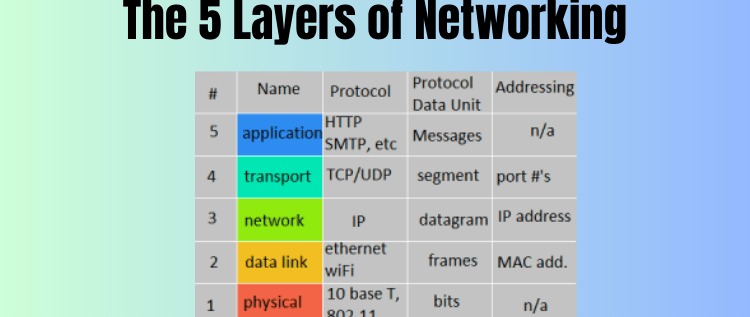Understanding the 5 Layers of Networking: A Comprehensive Guide
In today's digital age, networking has become an essential part of our lives. But, do you know what goes on behind the scenes when you send an email or connect to the internet? Understanding the layers of networking is crucial to building a strong foundation for your network infrastructure. In this post, we will dive into the five layers of networking and explain their functions. From the physical layer that deals with the hardware to the application layer that handles user interaction, you'll gain a comprehensive understanding of how data travels across a network. Whether you're a beginner or an experienced network engineer, this post is a must-read for anyone looking to strengthen their networking knowledge.


As technology continues to evolve, so does the complexity of networking. Understanding how networks work is vital for anyone who works with computers or the internet. Networks are made up of different layers, and each layer plays a specific role in how data is transmitted and received.
In this guide, we'll take a deep dive into the 5 layers of networking, explaining what each layer does and how it contributes to the overall functioning of the network.
Layer 1: The Physical Layer
The first layer of networking is the physical layer, which is responsible for transmitting raw bits over a communication channel. This layer is concerned with the physical components of the network, such as the cables, connectors, and network interface cards (NICs).
Layer 2: The Data Link Layer
The data link layer is responsible for the reliable transmission of data between two network nodes that are directly connected. It provides error-free delivery of data frames and ensures that data is transmitted to the correct device.
Layer 3: The Network Layer
The network layer is responsible for routing data packets between different networks. This layer determines the most efficient path for data to travel from the source to the destination.
Layer 4: The Transport Layer
The transport layer is responsible for end-to-end communication between applications on different hosts. This layer ensures that data is delivered error-free, in the correct order, and without duplication.
Layer 5: The Application Layer
The application layer is the topmost layer of the networking model. It provides services directly to end-users and applications, such as web browsers and email clients.
By understanding the different layers of networking, you can troubleshoot and solve issues in a more efficient manner. By identifying which layer of the network is causing the problem, you can quickly narrow down the cause of the issue and resolve it more effectively.
At HuynhTech, we offer a wide range of networking services, from hardware recommendations to installation and configuration. Our team of experts has the knowledge and experience to help you with all of your networking needs. Contact us today to learn more.
